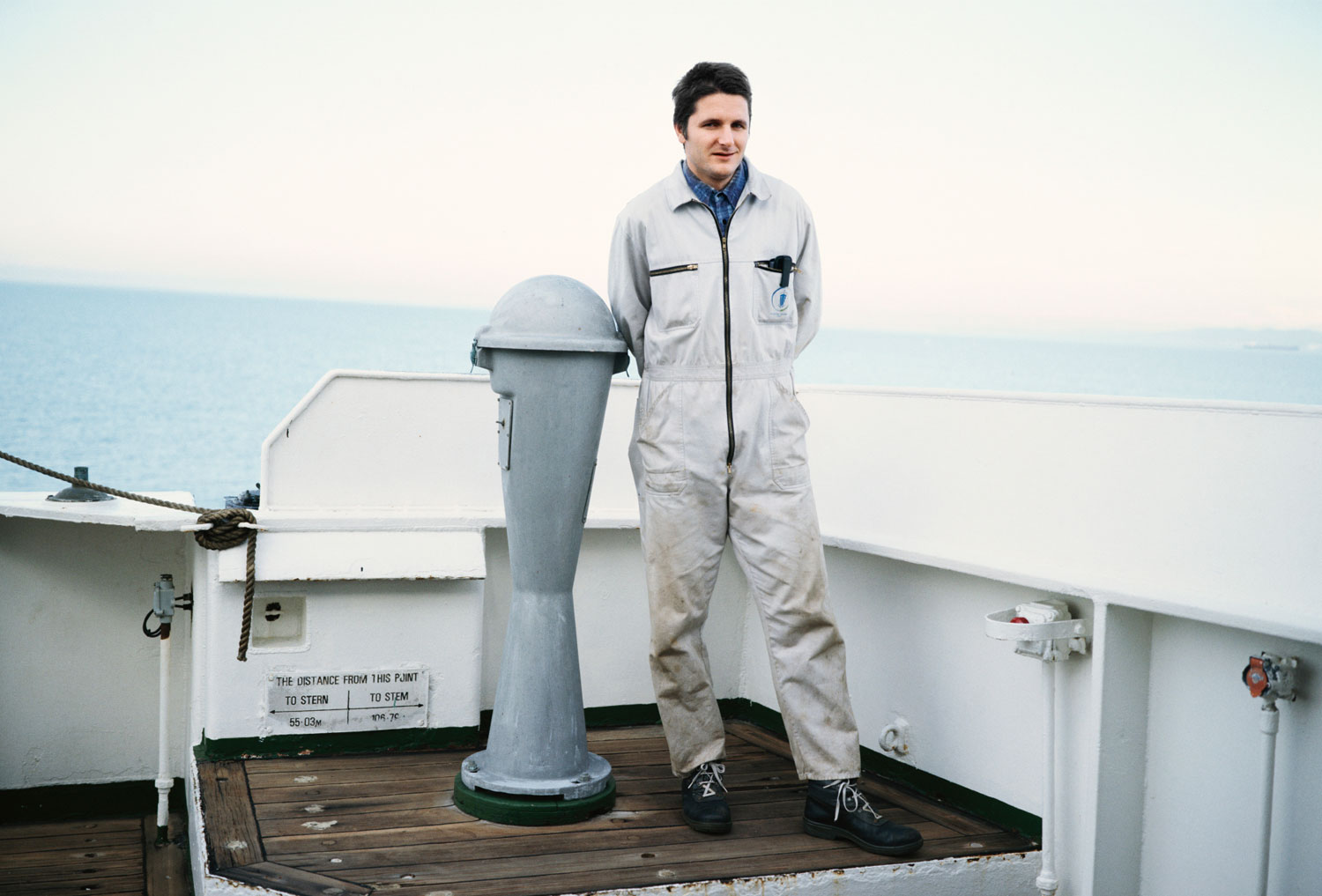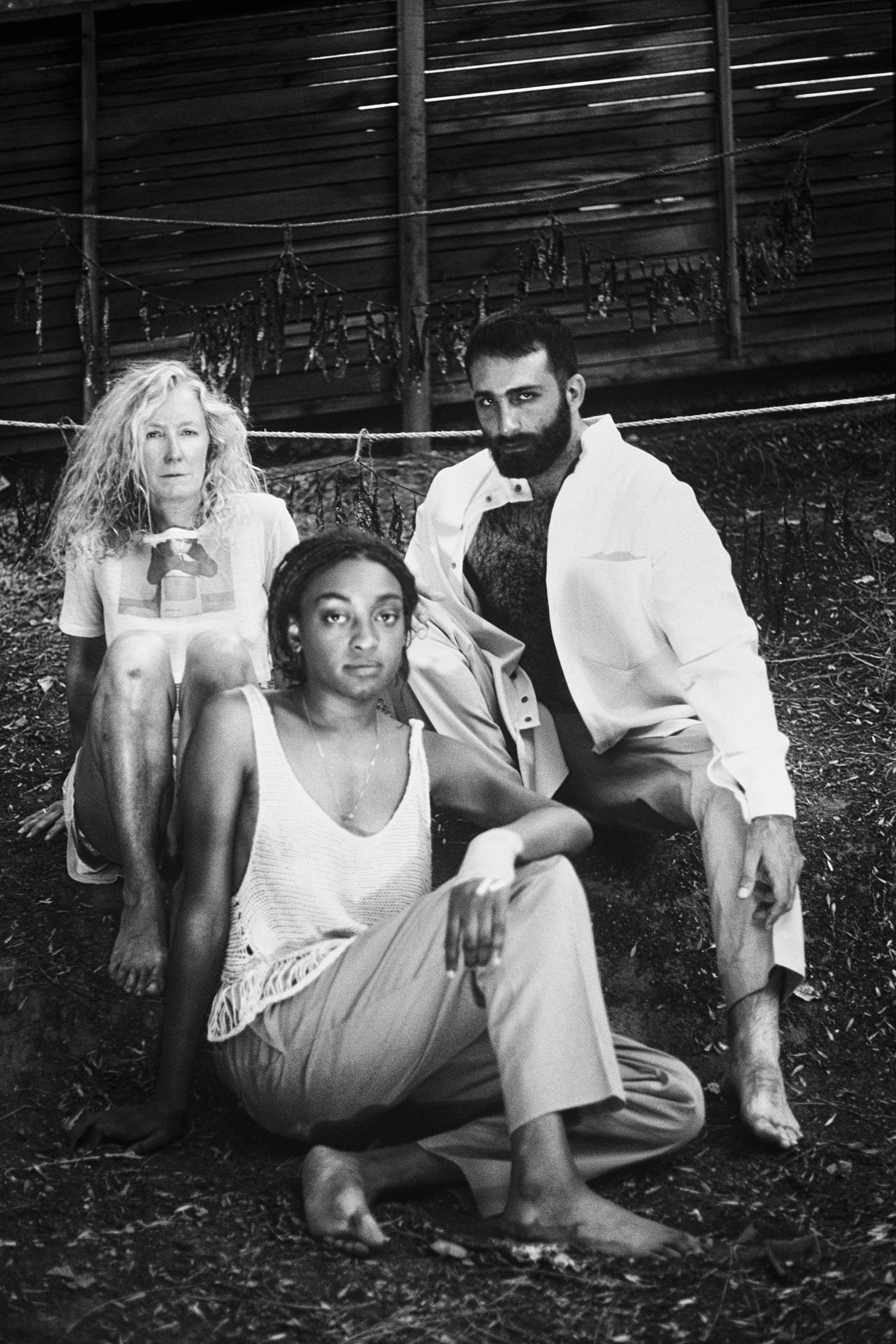
From Flash Art International, No. 179, November – December 1994
Sylvie Fleury: Do you think there is any similarity between a woman shopping for clothes and a collector buying artworks?
Vivienne Westwood: I hope that when a woman is buying my clothes she’s cultivating her taste, which would not be the same thing if she were buying art: in that case she would be corrupting and degrading any chances to have any taste.
SF: Is it then a lot more enriching, or enlightening, to buy clothes as opposed to art?
VW: Enriching in terms of what is human and alive. I think that I do distinguish between my clothes and most of the clothes that people would be able to buy. I hope that my work might be some sort of criticism of the sloppy mediocrity in dress, the likes of which the world has never seen such dreadful examples. I think that we live in an age when human beings were never dressed so dreadfully, and usually I don’t look at people because it is too horrifying.
SF: Dreadful like art? Your work and writings show you carrying ideas through the process of your creations. Isn’t there art where the formal aspect would not be that important, but rather the idea, which would make people more aware?
VW: You’ve put your finger on something. The fact is that there aren’t any ideas. This is the problem — there are only clichés. I consider an idea what is formed by every small decision that you make — the design is the result of thousands of these decisions: the thousands of decisions that you build up in a lifetime of making those decisions, plus the particular decisions that you make when you’re doing something.
SF: Would you consider works of art meant to question people, where the works would have to be done by the people looking at them? For example, I show shopping bags and I expect people to enjoy fashion because I believe that dressing up is a form of art, a way to express oneself.
VW: I agree. But before anything else, we have to separate art from fashion. Fashion can be art: it’s a question of the manipulation of materials and how much control you have over those. Once you master a technique, self-expression can happen. So it’s artistic — let’s just say that about fashion. But art and fashion is a problematic mix, as art is an elitist activity, fashion
is not.
SF: Do you read magazines?
VW: I don’t have much time, and if I spend time I want to spend it regarding ideas and there aren’t any ideas in magazines. We live in this ecological crisis and people are always worried about what they eat, or about smoking, but they don’t care that their minds are dustbins. In fact we live in an age of non-stop distraction where it is impossible to think, and unless you are alone it is not possible to have any ideas, because you can’t think. When I say alone I combine that with the idea that one must read because all ideas are in books, or in visual things — paintings for example.
SF: I have the feeling, flipping through magazines lately, that today’s fashion has a lot more to do with youth, or keeping young, than beauty itself. Couturiers used to create designs which would then be copied by the people on the streets, while now they seem more to be mimicking teenagers on the streets to sell packaged youth to customers.
VW: I agree with you. But young people have no taste: they were not born with it, so where would they get it? Youth, besides being ignorant and therefore full of confidence — ignorance and confidence always go together — is energetic and healthy. But health and energy are means and not ends in themselves. Today people are always pursuing these things as ends because they don’t imply any ideas. It’s very rare that I see someone looking nice except if they are seventy years old…
SF: The fashion world crumbling down could mean that the values we relied on since World War II are obsolete. Do we have to look for completely new ones?
VW: There is a lot to answer here and I might mention punk rock of course. Punks were intelligent enough to know that they were brain damaged: they were conscious of not having any ideas. This is what interested me: the struggle at stopping this terrible machine of corruption. Therefore we targeted the queen as if something might happen. Nothing really did happen, and I realized that by attacking the establishment you were actually its victim. After the gimmicky market of the 1970s and 80s when everybody was trying to sell things, it’s true that people can’t or don’t want to buy such things anymore. This slow-down could bring a change, but if there has to be a change, there will have to be ideas. You can’t just twiddle your thumbs and wait for it to happen: it won’t happen automatically — it might not happen at all.

SF: I have the feeling that any boring movie from the 1950s or 40s is enjoyable just because the clothes are so wonderful, but in today’s films costumes are quite appalling.
VW: Yes, it is called democratic envy, as promoted by Hollywood. Nobody is supposed to stand out: everybody is supposed to be as good as anybody else or as bad as everybody else.
SF: Some sort of political correctness…
VW: Yes. And the idea that a lady with a brain is supposed to be a lady who is intelligent enough to wear comfortable clothes and not clothes that are going to give her a hard time, although I actually don’t see the connection there. I don’t see the evidence of it, and I don’t know why all these women are working out trying to keep a youthful body, if they wear clothes that do nothing but hide it with some sort of awful sporty things that just look like anybody else’s things.
SF: Talking about comfortable clothes, couldn’t we quickly jump to high-heel shoes? Would you say that shoes are sculptures?
VW: I don’t know… People do. But they should be worn and that’s it. When the form of it is great, it does not need the foot inside to actually make its shape. But when the foot is inside it’s what it’s supposed to be.
SF: Do you ever go shopping?
VW: No, I hardly go shopping. I used to go shopping for clothes before I was a designer; it was very hard to find them but I did eventually. I used to buy really traditional things: cashmere sweaters or kilts or those English macs. But then I would wear them with something very special, like a pair of stiletto boots. I would like to buy things sometimes.
SF: Would you buy books or art?
VW: I buy books but I really would buy paintings. I have bought art recently: three paintings from a wildlife exhibition. A brilliant drawing of the camel from Regent Park — I don’t remember the name of the artist. I’ve got it on my wall along with two other prints — one was a watercolor of two birds and the other one was a linocut of a stag in a woods.
SF: In your latest collection you did these cushions to emphasize the hipline. Was that a comment on waif bodies?
VW: As I already said, my work is to idealize women. I think that to be a woman is to wear high-heel shoes, because we are the only animals that stand on two legs. It’s part of this special species — this human species — to be able to do that. You have heard that little scenario before: that once the human animal stood on two legs and freed its hands, the brain developed and created the human species. I think it’s natural to wear high-heel shoes and to have a bottom that sticks out — a lady is really the most beautiful animal. The high-heel shoe augments the possibilities to play around with this upright dynamic, to express yourself through the genius of being human, which is to stand on two legs. I think it’s just great to change your silhouette because the eye gets used to it — this is what fashion is about.
SF: Did you say: “When in doubt, overdress”?
VW: Yes, definitely, because it’s horrible to go somewhere and just wish that you had put on something more adventurous, more special. I mean, you can be in the most boring place, but if you’re just dressed wonderfully and you are the center of attention, you know, it’s really great and it’s even better if you see somebody else who’s even better dressed. Not that I’ve got that sort of ego that I have to be the best… You know it’s bad to think, and thinking is dangerous.
SF: Well, that sounds like the perfect conclusion!
VW: Yes, it’s dangerous to think — it’s like Lady B. in The Importance of Being Earnest saying: “Arguments are always vulgar and sometimes convincing.” She doesn’t want to think, she does not want to change her mind. But it’s true that arguments are vulgar and sometimes convincing.
SF: Are they necessary?
VW: If you want to change your mind they are. I prefer to change my mind, but people would need to have a rationale that I felt was superior to the one I was using in order for me to change it. The facts would have to change, as you know. But if people bring some more facts to bear upon the situation then you have to change your position.
SF: Don’t you have to change position almost all the time?
VW: Yes you do, anyway. But you have to be alone as well.
SF: Do you spend a lot of time alone?
VW: Certainly not enough!





